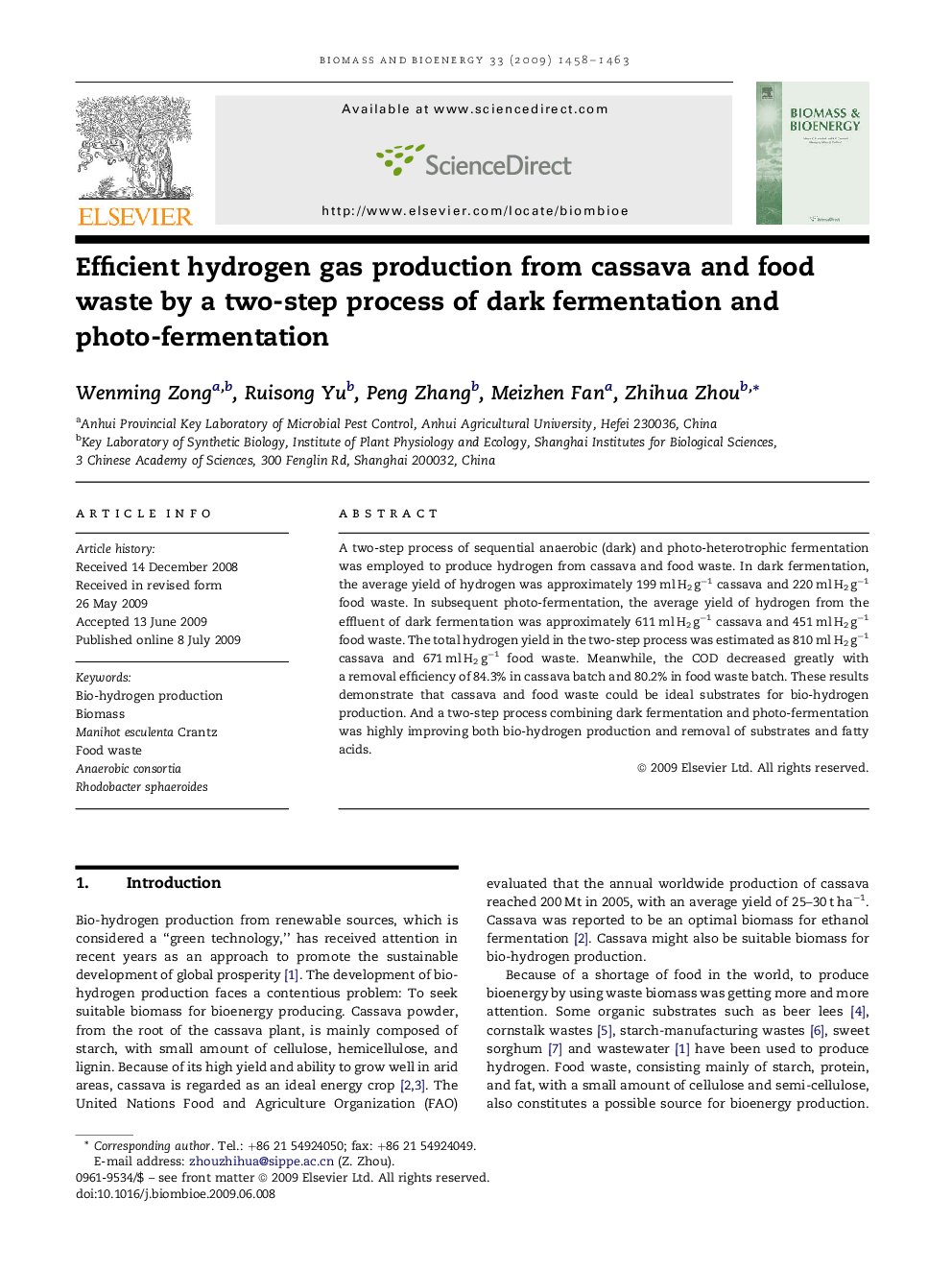| Article ID | Journal | Published Year | Pages | File Type |
|---|---|---|---|---|
| 678522 | Biomass and Bioenergy | 2009 | 6 Pages |
A two-step process of sequential anaerobic (dark) and photo-heterotrophic fermentation was employed to produce hydrogen from cassava and food waste. In dark fermentation, the average yield of hydrogen was approximately 199 ml H2 g−1 cassava and 220 ml H2 g−1 food waste. In subsequent photo-fermentation, the average yield of hydrogen from the effluent of dark fermentation was approximately 611 ml H2 g−1 cassava and 451 ml H2 g−1 food waste. The total hydrogen yield in the two-step process was estimated as 810 ml H2 g−1 cassava and 671 ml H2 g−1 food waste. Meanwhile, the COD decreased greatly with a removal efficiency of 84.3% in cassava batch and 80.2% in food waste batch. These results demonstrate that cassava and food waste could be ideal substrates for bio-hydrogen production. And a two-step process combining dark fermentation and photo-fermentation was highly improving both bio-hydrogen production and removal of substrates and fatty acids.
